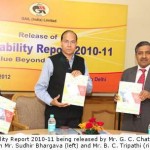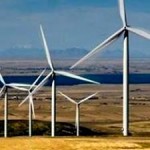
Washington, DC – Shandong Province has forest cover of only 13.4 percent, ranking it low among China’s provinces. Soil erosion, droughts, desertification and flooding are frequent problems in the province. This not only affects land productivity and people’s living conditions, but also continues to degrade the natural resource base in large areas of Shandong. Efforts by the provincial government have led to an increase in forest resources. As land suitable for commercial plantations has become limited, efforts are shifting towards the ecological and public goods functions of forest development to include afforestation of degraded areas to generate environmental benefits.
The Shandong Ecological Afforestation Project will re-vegetate some 38,000 hectares of degraded hill sides and develop some 28,000 hectares of protection forest belts and plantations on saline coastal areas. All this is expected to reduce soil and water erosion, protect agricultural land and enhance the environment for the local population. Support will also be provided to applied research and extension programs to generate and disseminate a wider range of planting models. A strong monitoring and evaluation system will be set up under the project to measure the public goods outputs and outcomes of the various project activities.
“The World Bank has been assisting China in the development and management of the forestry sector for over 20 years, contributing to 10 percent of its overall reforestation effort. While most previous World Bank projects focused on improving timber output, quality and standards, this project will focus on environmental protection by establishing multi-story forest cover in areas prone to soil and water erosion and shelterbelts in saline coastal areas prone to wind erosion,” said Susan Shen, World Bank’s Lead Natural Resources Management Specialist and Task Manager for this project. “This way the project will address an important and emerging aspect of forest development in China and complement ongoing World Bank operations in the forestry sector.”
The World Bank loan will cover 50% of the project costs, with the other 50% financed through counterpart funding.
For more information on the project, please visit http://www.worldbank.org
Source: World Bank, May 6, 2010














